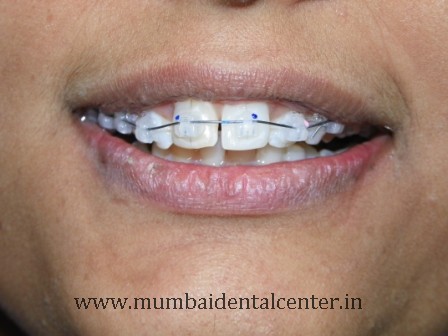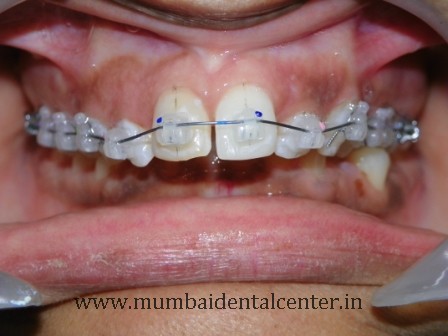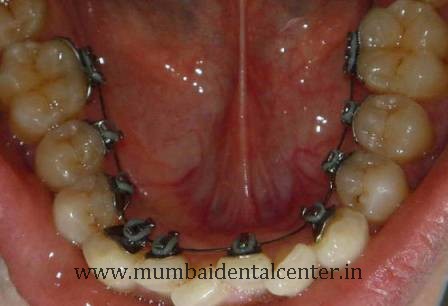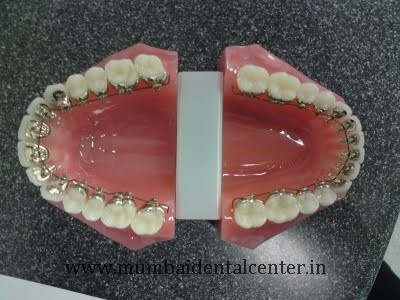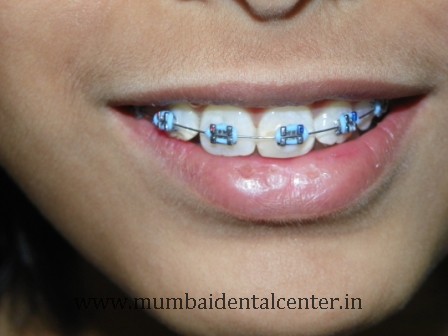Metal braces :-
The most inexpensive type of braces are the traditional, stainless-steel versions. Obviously, the drawback to wearing these is how visible they are. Metal braces hold a thin wire in place with rubber bands to put pressure on the teeth and move them to the desired place. The wires and elastics are changed every month.
Metal braces can irritate gums and cheeks at first. Once you have them on, you have to watch what you eat, avoiding things that can stick to the braces, such as caramel or gum. You also have to avoid eating hard food, which can move or dislodge the braces.
Damon Q Braces is a variation of Metal braces. They have an advantage over traditional braces in the fact that they do not require rubber bands. Instead the bracket allows for the wire to slide making them more comfortable.
Ceramic braces are tooth colored braces which blend in with the teeth and appear much less visible in your smile. Wires attached to these braces are held with clear elastics minimizing the appearance of the braces further.
Though the braces themselves won't stain, the elastics can easily color, especially since our diet incorporates a lot of turmeric in our food. The wires and elastics are changed every month.
Damon C Self ligating braces are a variation to the traditional ceramic braces. These braces eliminate the need of elastics, allowing the wire to remain in contact with the braces for longer and thereby shortening the treatment time.
Lingual braces are customized to bond and hide behind the teeth to remain out of sight. And because they are bonded behind the teeth, you’ll never know if a person uses one or not. They are ideal for adults who are concerned about aesthetics and looks during orthodontic treatment. They cost more than metal or ceramic braces because the process is more complicated. Lingual braces don't work well on small teeth and get in the way of the tongue, potentially causing speech problems and injuries initially.

